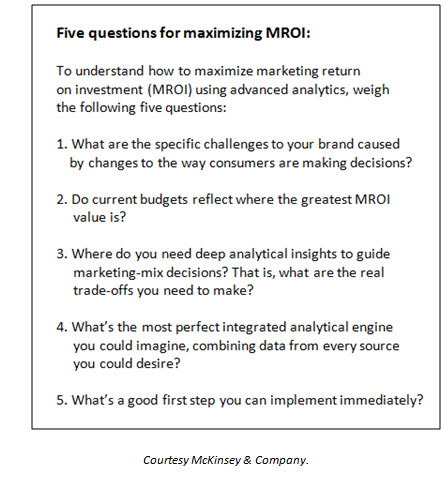(This post was originally published by Xenith Document Systems, a leading provider of Managed Print Services, Document Solutions and Workflow Automation in London, United Kingdom. They are a Xerox Platinum Partner, winner of the Xerox MPS Partner of the Year award in the UK, and NewField IT’s Systems Integration Partner of the Year in the UK. Reposted with permission.)
“Most organisations are looking to take paper out of their business.” (Kevin Conder, Driving Organisational Performance – Understand)
As digitisation or digital transformation continues to dominate as a key topic, it might not come as a surprise that many organisations are trying to reduce their paper usage.
On the contrary to this, the amount of paper consumed is actually rising – but this is simply because the number of documents created by users today is increasing exponentially. And just because the number of documents being created is increasing, it shouldn’t mean print has to follow suit.
Consider a current process; you get an email, that’s a document, maybe your process means that you print that email and put it in a filing cabinet (although hopefully not!).
It’s processes such as this that make it so important to find opportunities within your business to streamline and digitise them, in order to reduce waste, cost and increase sustainability.
The trouble is, you can’t argue change without the facts and analytics in place – it’s just too difficult to get people to change their minds – on the office floors and in the boardroom too.
How Are Your Processes?
Ah, the question you would just love to ask managers and team/department heads – how are your processes? But in all honesty, how often would you get the answer: “they are best in class and completely compliant, now go away.”
The process works, it’s regulation compliant and people know it – so why would you change it?
Here are 5 reasons; 1) it’s inefficient 2) it’s costly 3) it’s wasteful 4) it’s unsustainable 5) it’s time consuming.
But these reasons alone will never be enough to convince people, what you need is a business case, “you have to go with proof to certain business units that you do have an opportunity to improve that process or save money.” (Kevin Conder, Driving Organisational Performance – Understand)
This is where printing analytics come to hand – there are 5 main types of printing analytics but we’re going to focus on two; user analytics and document analytics.
Printing – User Analytics
For a long time, our industry has been focused on the device because that’s the bit you can control. You might want something that’s more cost effective, something with swipe printing, but actually, the root cause of documents are users.
“We produce the documents and then we decide to print them or not or our process dictates whether we print them or not. So our starting point to analysing any processes; what are we (the users) doing? And that’s user analytics in our world.” (Kevin Conder, Driving Organisational Performance – Understand)
Getting to the bottom of how users are printing, what they’re printing and why, is a great way to establish evidence for how a process can be optimised and made more efficient.
With print management applications, every time you print a document, the system records your name, your department, what time of the day you printed, how many page you printed, whether colour or black and white, what application you printed from and what device that went to.
However, this data isn’t being utilised in it’s current format and to make real gains using this data, you need to think about how it can be aligned with business operations and what actions can be taken.
We can start to identify what our quick wins could be – where are the users that are generating the most documents? Generating the most volume? Let’s go and talk to these users and find out what they’re doing. Is it useful? Can it be changed?
So this enables us to start getting those quick wins about appropriateness of print, and what can be done instead.
Printing – Document Analytics
The second type of printing analytics that will help us build evidence for change and digitisation is document analytics.
So if you take what we know; we know what users are printing, we know what departments are printing, we know what our devices are printing, we add in what filing we have in our organisation and then we have to add in why.
 Why are we printing a lot? What happens to the documents we print? Is it all going into a filing cabinet or is it actively used?
Why are we printing a lot? What happens to the documents we print? Is it all going into a filing cabinet or is it actively used?
The objective here is to identify which processes we should be looking at and which process presents the best cost saving opportunity for us. Or the best efficiency gains for us.
From a document analytics project point of the view, the stages are;
- We know what volume we’re doing as an organisation, as departments.
- We interviewed the head of the department – what are their key business processes?
- We asked the users what percentage of their output volume is aligned to each of the key process and why do they print a document and what happens to it?
Eventually we end up with a diagram of some answers that show how and why people are printing within the organisation. We know which processes are inefficient and could be improved. We know where the cost savings are.
How you decide to present this information will depend on your overall objective and goal of gathering the information – what’s the selling point to the board and the organisation for changing the processes in place?
Do you want to change filing and storage? Do you want to reduce waste and environmental impact? Or do you want to avoid sharing in a printed format, why not digitally?
One of the big wins that can be an outcome of document and user analytics is giving people time, making it more efficient. When you can see every touchpoint in a process, you can also see which touchpoints can be removed creating more time for those involved.
Using Printing Analytics as Proof for Change
Once you’ve gathered your evidence and proof sources, you have a business case for change. From the analytics you can show which processes can be optimised and improved and you can give examples of why it’s not currently working at the moment. People won’t change until you give them a real reason to.
Learn more about printing analytics from Kevin Conder, General Manager, NewField IT in our video: ‘Driving Organisational Performance – Understand’




